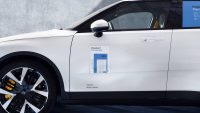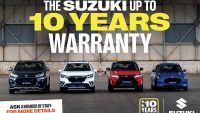A database loophole is seeing one in 50 write-offs back on the road with a clean vehicle history.
That’s according to a new investigation by Autocar, which said today (May 19) that the problem with the insurance industry’s database was first flagged up in 2019 but people still risked buying a vehicle with a ‘clean’ record when it had actually been written off.
Insurers use the Motor Insurance Anti-Fraud Theft Register to record details of cars they have written off, and by vehicle-check companies when confirming a car’s status.
However, the register is voluntary, and all of the UK’s 200 insurers aren’t signatories, which means insurance write-offs can be resold with the incorrect vehicle status.
Autocar’s probe revealed that 15,000 cars that should be declared write-offs go back on the road unrecorded every year – equal to one in 50 of all the vehicles that insurance companies write off.
The car title said that saw used cars being advertised and sold with a clean record, despite being write-offs.
What’s more, Autocar said vehicle history checker Motorcheck estimated that at any given time more than 2,000 cars were being advertised as having a clean history but there were serious questions about their past.
Some 700,000 claims are added to the register every year, but vehicles that are only insured for third party or are self-insured by their owners don’t appear on the database, causing major headaches for vehicle-check firms.
Editor Mark Tisshaw said: ‘Used buyers are at risk of unknowingly buying a written-off vehicle because of this loophole in the industry.
‘A single vehicle health check is no longer a good enough guarantee, as our investigation found owners had bought cars which had been incorrectly flagged as not written off by a vehicle health check provider.
‘The Motor Insurance Bureau has told us it is introducing new measures to improve the database.
‘But for now, buyers remain at risk of inadvertently buying second-hand cars with incorrect histories, as well as having to rely on multiple vehicle check agencies to get an accurate understanding of their potential purchase’s background.’
Image used for illustrative purposes only




































